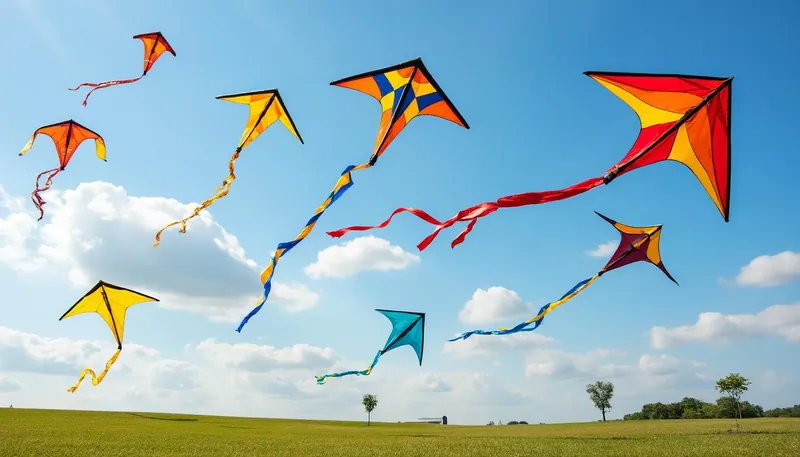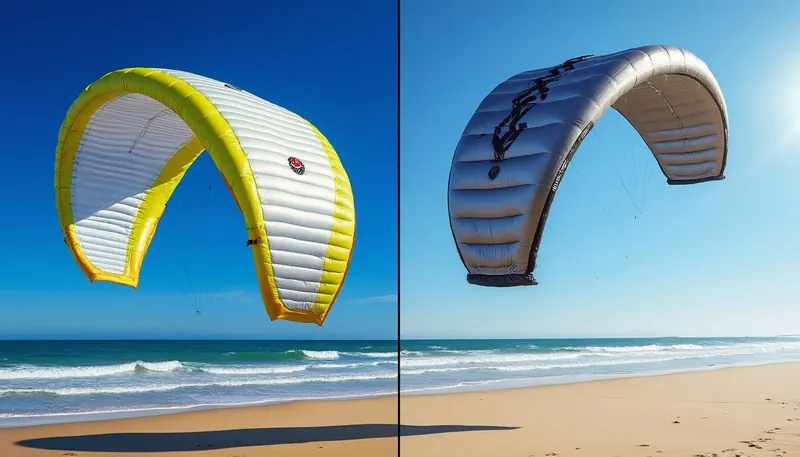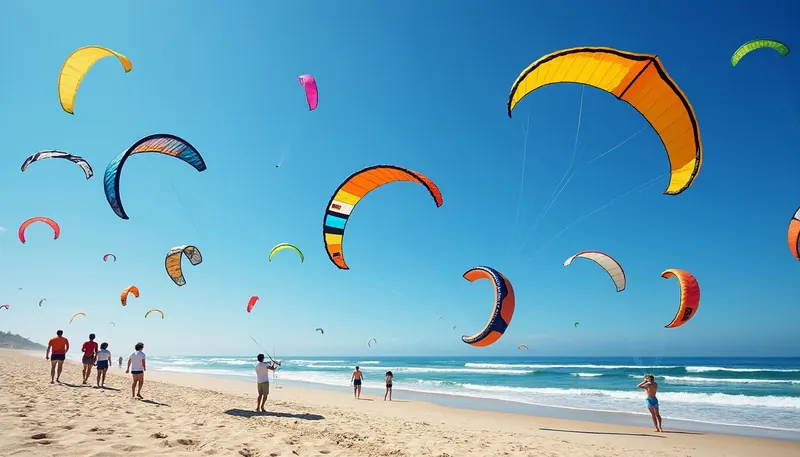Understanding the differences between foil kites and inflatable kites is essential for anyone looking to dive into the dynamic world of kitesurfing. These two types of kites offer distinct experiences, performance characteristics, and user requirements. Foil kites, with their advanced structure, have gained popularity for specific conditions, often dominating light wind scenarios and competitive events. On the other hand, inflatable kites have a more robust presence in various kitesurfing environments, appealing to a broader audience. By exploring their features, benefits, and how they perform under different conditions, kitesurfing enthusiasts can make informed choices for their riding style.
In brief:
- 🚀 Foil kites: Ideal for light winds, less maintenance.
- 💨 Inflatable kites: More versatile, better for variable conditions.
- 🏄♂️ Control and technique: Each type requires different handling skills.
- 🔧 Durability and repairability: Foil kites may be easier to repair than inflatables.
- 🌊 Performance nuances: Foil kites excel in racing; inflatables thrive on surfing.
The Mechanics of Foil Kites
Foil kites are uniquely designed, lacking the traditional structure associated with inflatables. Instead, they utilize a series of internal chambers or cells that capture air, effectively creating lift. This design is the key to their performance, particularly in light wind conditions.
One of the primary advantages of foil kites is their ability to be incredibly light and compact, allowing for greater ease of transport. Let’s break down some of the essential mechanics behind foil kites:
How Do Foil Kites Work?
Foil kites operate by utilizing the principles of aerodynamics just like an airplane wing. When the kite is in motion, air enters the front of the kite and fills the internal cells. This creates a pressure difference that holds the kite’s shape and provides lift. This structure allows for them to function efficiently even in lighter winds.
Benefits of Foil Kites
- 🌬️ Light Wind Performance: Exceptional at generating lift in low wind conditions.
- 📦 Compact Storage: Collapsible design makes them easy to store and transport.
- 🩹 Less Maintenance: With fewer parts that can fail, they generally require less upkeep.
Examples of Foil Kites
Major brands such as Ozone, Flysurfer, and North often lead the market with innovative designs. For instance, the Ozone Chrono series has been highly praised for its performance in both light wind and racing conditions.
| Brand | Model | Best For |
|---|---|---|
| Ozone | Chrono | Lightwind & Racing |
| Flysurfer | Peak | Freeride & Light Conditions |
| North | Vegas | Freestyle |

Inflatable Kites: The Mainstay of Kitesurfing
Inflatable kites, often referred to as Leading Edge Inflatable (LEI) kites, have been the cornerstone of kitesurfing for years. Unlike foil kites, these kites have inflatable bladders that provide structure and stability. The leading edge and struts are inflated, ensuring the kite retains its shape even in varying conditions.
This design offers several advantages that broaden the appeal of inflatable kites:
The Advantages of Inflatable Kites
- 🌪️ Versatile Performance: Effective in a wider range of wind conditions.
- 🏄 Stability in High Winds: Better suited for aggressive kitesurfing in choppy water.
- 🔧 Easier Repairs: While they can suffer damage, the repair process is straightforward for most users.
Control and Skillset
Using inflatable kites requires a specific skill set, including understanding how to navigate gusty winds and manage the power of the kite. Riders often find inflatable kites easier to relaunch in water due to their buoyancy.
Top Inflatable Kite Models
Brands like Cabrinha, Slingshot, and Duotone are leaders in this segment. For example, Cabrinha’s Switchblade is a favorite among all-around riders due to its versatility and consistent performance across conditions.
| Brand | Model | Best For |
|---|---|---|
| Cabrinha | Switchblade | All-Round Performance |
| Slingshot | RPM | Freestyle & Wave Riding |
| Duotone | Evo | Beginner-Friendly |

Skills Needed for Each Type of Kite
Choosing between foil kites and inflatable kites goes beyond just technical specifications. Each type requires different skills and techniques to effectively harness the wind and perform tricks.
Skill Set for Foil Kites
Riding a foil kite may seem easier due to its lighter structure; however, it demands precision and finesse. Here’s what it entails:
- ⚖️ Balance and Control: Riders need to maintain balance and sensitivity to wind conditions.
- 💡 Technical Skills: Mastering pressure and kite angle is crucial for effective steering.
- 🔄 Adaptive Techniques: Adjusting to changes in wind and water surfaces more holistically.
Skill Set for Inflatable Kites
Inflatable kites offer a stable platform but require a different skill set:
- ⚡ Power Control: Understanding how to manage the kite’s power during jumps and tricks is key.
- 🌊 Relaunch Techniques: Familiarity with methods to relaunch the kite in waves or after crashes.
- 🌪️ Wind Awareness: Reading gusts and lulls effectively to maximize performance.
Performance Comparison and Choosing the Right Kite
The decision to go with a foil or inflatable kite ultimately comes down to the intended use, your skill level, and the conditions where you’ll be riding. Both types have strengths and weaknesses that cater to different styles of kitesurfing.
Performance Attributes
| Attribute | Foil Kites | Inflatable Kites |
|---|---|---|
| Wind Range | Light to Moderate | Wide Range |
| Durability | Moderate | High |
| Ease of Use | Intermediate to Advanced | Beginner to Advanced |
| Storage | Compact | Bulky |
| Ideal Uses | Lightwind & Racing | Freestyle & Wave Riding |
Making the Right Choice
Ultimately, the decision should align with your kitesurfing goals. If you aim to race or surf in light winds, a foil kite may be beneficial. However, if you’re looking for versatility and ease of handling, especially in variable conditions, inflatable kites are a fantastic option.
What type of kite is better for beginners?
Inflatable kites are often recommended for beginners due to their ease of use and ability to relaunch in the water.
Are foil kites more expensive?
Generally, foil kites can be more expensive due to their specialized design and materials.
Can I use a foil kite in strong winds?
While foil kites can handle moderate winds, strong winds may require additional skills to manage their power effectively.
How do I maintain my kite?
Regularly check bladders for leaks, clean with fresh water and store away from direct sunlight to prolong lifespan.
Which kite will last longer?
Inflatable kites tend to have a longer lifespan due to their robust construction, but proper care is crucial for both types.


